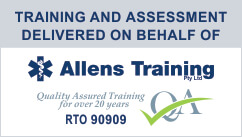First Aid and CPR Saves Lives
Bystanders often feel helpless when they see somebody collapse or get injured, but knowing just a little about the basics could transform the chances of survival, writes Lissa Christopher
The young marathon runner was still lying face down and showed no signs of life when Penelope Little arrived.
“As soon as I rolled him over it was very obvious … he wasn’t breathing and … I could tell pretty quickly he needed CPR [cardio pulmonary resuscitation],” the NSW Ambulance spokeswoman said. There were lots of people around but no one had tried to turn him over, let alone start CPR. They’d called for help and left it at that.
“At a bare minimum they should have rolled him onto his side, into the recovery position,” she says. “You should never leave someone lying face down. But this man required CPR and the fact that nobody gave it to him – it was alarming. It was like, ‘come on, people!’ This man is obviously unwell.”
It’s common for bystanders to do nothing when someone has collapsed and wait for “someone in a uniform” to turn up. Studies from the US have shown that the primary reason bystanders don’t attempt CPR is fear of not doing it correctly but, as Harvard Medical School states in its public health guides, “Poor CPR is better than no CPR” (see box).
”People don’t realise that the role of a bystander is actually very important,” Little says. “Particularly in case of CPR. It needs to be done very soon after the person has gone into cardiac arrest. It you have an out-of-hospital cardiac arrest, your chance of survival is about 3 per cent and the only way you are going to survive is if somebody quickly recognises that you are in cardiac arrest, quickly does CPR and quickly calls an ambulance.”
Presuming CPR requires an expert is probably the most serious first-aid misconception, but as NSW Ambulance and St John Ambulance will attest, there are plenty of others.
Take fainting, for example. It’s common for well-meaning people to try to get someone who has fainted to sit up. In fact, they should be left lying down.
St John Ambulance deals with a lot of fainting during the Royal Easter Show, Little says, particularly among elderly visitors. It happens everywhere from the showbag pavilion to the scones ”and it’s amazing how many times you get there and someone is trying to prop this woman up on a chair when all she wants to do is faint and lie back on the ground”.
“I often say to people, if a person wants to faint, let them do it. In essence, it’s the body trying to fix itself, usually because there’s a problem with their blood pressure.”
Other scenarios where paramedics and St John Ambulance volunteers commonly encounter misapprehensions include bleeding noses, burns, poisoning, penetrating injuries, choking, diabetic coma and seizures.
People often don’t realise that diabetics can lapse into a coma due to high blood sugar as well as low blood sugar, Caroline Woods, an intensive care paramedic with the Ambulance Service of NSW, says. Feeding sugar to someone who is having a high blood sugar (hyperglycemic) attack is only going to make things worse.
“We often find someone lying on the floor with all these lollies hanging out of their mouth,” she says. “Someone has tried their best to help but they’ve got it wrong.”
Little recalls attending to a seven-year-old girl having a seizure and her father had his hand in her mouth, holding onto her tongue in the mistaken belief he was stopping her from swallowing it. “I said to him, ‘take your hand out of her mouth and let her have her seizure’,” she says.
“Never try to hold down someone who is having a seizure,” Woods says. Clear them a space and put something soft under their head if possible. Don’t put anything in their mouth.
It’s not actually possible for someone to swallow their own tongue. People often bite their tongue during a seizure, but they’re highly unlikely to bite through it so don’t panic, she says.
Despite the poor odds, the marathon runner Little found lying face down did survive. Little got to him quite quickly and performed CPR for several minutes, another St John person arrived in minutes with a defibrillator and an ambulance arrived shortly after that. “He was 29 and he made a full recovery,” Little says. “He was a very lucky guy.”
“In my job, you often wish that a bystander had been more helpful. We are so lucky with NSW Ambulance that when you dial 000 they will give you advice over the phone but often people are hysterical or they don’t listen to that advice or they hang up.
“So many times I have thought, ‘please, God, I hope somebody is already doing CPR … because we are not going to be able to save this person unless somebody has started’.”
St John Ambulance runs regular first-aid courses and recommends a CPR refresher every 12 months.
Your closest Apply First Aid and Perform CPR course on The Northern Beaches is at The Brookvale Hotel. Come along and get trained by Simple Instruction and enjoy a fun day out.
